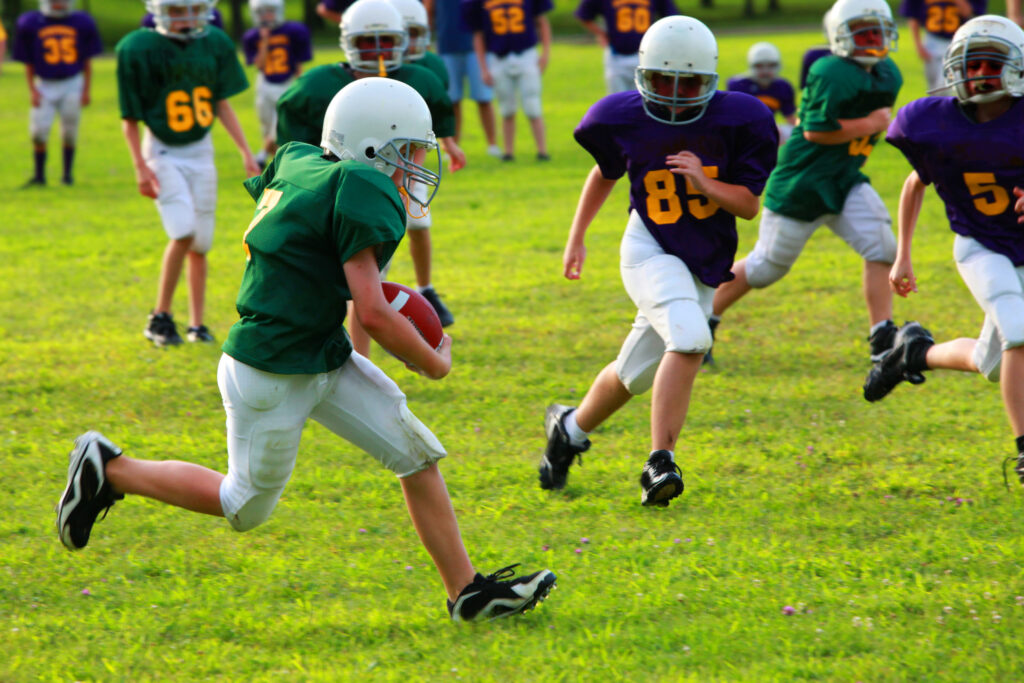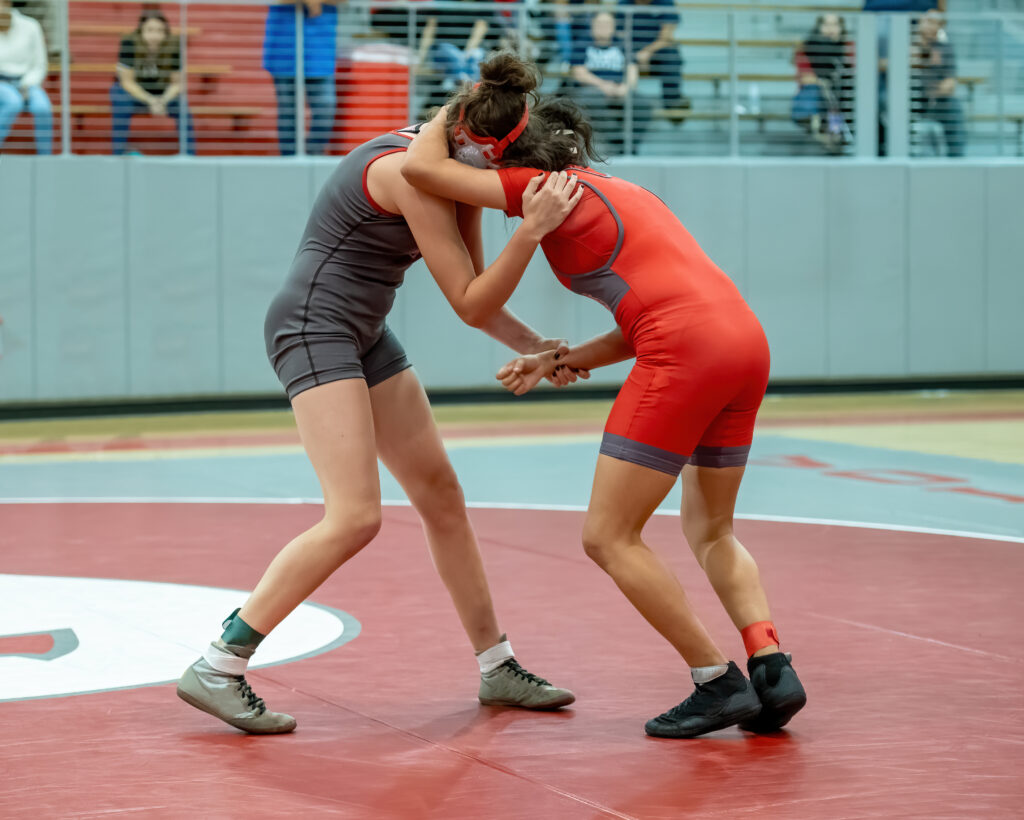Note: this is just one part of our series on Sports: The Good, the Bad, and the Ugly, where we discuss all the ways athletic participation can influence teens. Read our previous articles here and here.

The most aggressive sports player in history might arguably be Jack Tatum. Tatum was a football player with the Oakland Raiders. He was so violent that his nickname was “Assassin.” In 1978, Tatum collided so strongly with an opposing player that the latter suffered from a damaged spinal cord, leaving him paralyzed for the rest of his life. According to sources, Tatum never even felt remorseful for the incident. “If you want to play football for a living, you’re going to get injured,” he said.
The NFL later outlawed such violent tackles.
Watch a couple of high school sports games, and it’s likely you’ll see aggression both on and off the field. High school athletes suffer from millions of injuries a year, studies show. While some of these are simply due to the nature of the sport (instrumental aggression), others are due to fights that break out between the players (hostile aggression). One study of adolescent athletes found that 13% of them had deliberately attempted to hurt an opponent (Shields, 2005).
This can all lead a parent to wonder: Are sports making my teen aggressive?
Adolescent Aggression and Sports
Athletic participation offers myriad physical, emotional, academic, and social benefits to teens. Organized sport provides structure, builds character, and for the most part, prevents adolescents from taking part in risky behavior. In fact, studies show that certain athletes (basketball and lacrosse, in particular) have some of the highest rates of positive wellbeing and mental health among their peers.
At the same time, there is research showing a relationship between contact sports and violence.
Specifically, high-contact sports.
High-Contact Sports
One landmark study found that high school boys who played an aggressive sport were more likely to engage in physical violence later on than their peers who didn’t. In surveying 147 college freshmen, the researchers found that athletes who played an aggressive sport in high school had more accepting attitudes towards violence than the comparison group. In particular, these athletes felt that aggression was a legitimate way to solve problems, particularly with other people.
The researchers also looked at violence towards women. The teens who played aggressive sports were more likely to be physically coercive towards their girlfriends in college and likely to cause them injury. The researchers concluded that participating in aggressive high school sports “is one of the multiple developmental pathways leading to relationship violence.” (Forbes, 2006)
Which sports did the researchers classify as aggressive? Football, basketball, soccer, and wrestling, due to the “frequency and intensity of physical contact” and the potential to cause injury to an opponent.
High-contact vs. Low-contact Sports
One group of researchers actually conducted a lab experiment back in the 90s to affirm the hypothesis that athletes in high-contact sports are more aggressive – even off the field – than other athletes. Despite their small sample size (only 16 participants), the researchers divided the athletes into two groups based on the type of sport they played. Football and basketball players were in group 1—the high-contact group. Track and baseball players were in group 2—the low-contact group. Like in the previous study, all the participants were male. (Most studies examining aggression and athletics focus exclusively on males. Read our other articles to find out why.)
The researchers then measured aggression by having all the participants play a computer game called “The Point Subtraction Aggression Paradigm” (PSAP). PSAP is a computer task measuring how someone responds when they’re provoked. It has been well-validated to measure aggression. In the activity, adolescents are shown a fake bank account with the amount of money in their account displayed on the screen in front of them. A fake opponent, who they don’t see, is regularly deducting money from their account. In response, the participants can choose one of three actions: a defensive response, an aggressive response, or an escape response. After several rounds of the task, the researchers found that the football and basketball players—group 1—chose significantly more aggressive responses than the other athletes (Huang, Cherek, & Lane, 1999).
Football and Wrestling

However, another landmark study found that only football and wrestling correlate with aggression—not basketball, soccer, or any other sport. Professor Derek Kreager from Penn State University examined data from thousands of adolescent athletes from more than a hundred high schools. The students played a range of sports, including baseball, basketball, tennis, football, and wrestling.
Results showed that only football players and wrestlers were significantly more likely to get involved in a serious fight than other athletes. In fact, they were 40% more likely to be aggressive, even off the field. Athletes of other sports showed no association with aggression.
In discussing his findings, Dr. Kreager wrote that this could be because football and wrestling are hypermasculine sports “where physical domination, the use of the body as a weapon, and brutal bodily contact are necessary for on-the-field success.”
In other words, football and wrestling are both extremely high-contact sports that require aggression in order to win. In the former, players must do their best to prevent opposing teammates from advancing down the field—whether it’s tackling, hitting, or otherwise blocking the players. Though cheap shots (deliberately injuring another player, especially when he’s defenseless) are forbidden, players don’t always listen. At the same time, wrestling might even be more aggressive, since there’s not even a ball in the equation, just bodies. The purpose of the sport is to take your opponnent to the mat and pin them, which requires aggression.
Correlation vs. Causation
So, are sports making high school teens aggressive? First, it depends on which sport you’re talking about. Athletes in high-contact are more likely than those in low-contact sports to be aggressive, but even among high-contact sports, the results vary. While football and wrestling are highly linked to violence across most studies, other sports are not as clear-cut.
Also, keep in mind that just because there’s a correlation between contact sports and aggression doesn’t mean every teen athlete is violent. Correlation does not always signify causation. There could be other theories that might explain why high-contact sports link to aggression even off the field. Frustration, high temperatures, and parental/coach expectations are just a few. One study even differentiated between athletic participation and jock identity, arguing that being a jock leads to aggression, not just being an athlete.
It’s also possible for correlations to go in reverse. For example, perhaps boys with strong masculine traits – which correlate with aggression — are choosing aggressive high school sports. Or perhaps parents are encouraging their high-energy, aggressive adolescents to play sports.
Advice to Parents
In any case, such correlations are not reason enough to stop your teen from playing sports. As mentioned earlier, sports are probably one of the healthiest outlets a teen can have, which is probably why research shows it’s the most popular extracurricular activity for high school teens.
At the same time, however, one should be aware of the research linking athletic participation to physical aggression. That way, if and when you notice an aggression problem developing with your teen, you can take the necessary steps to resolve it.






























































